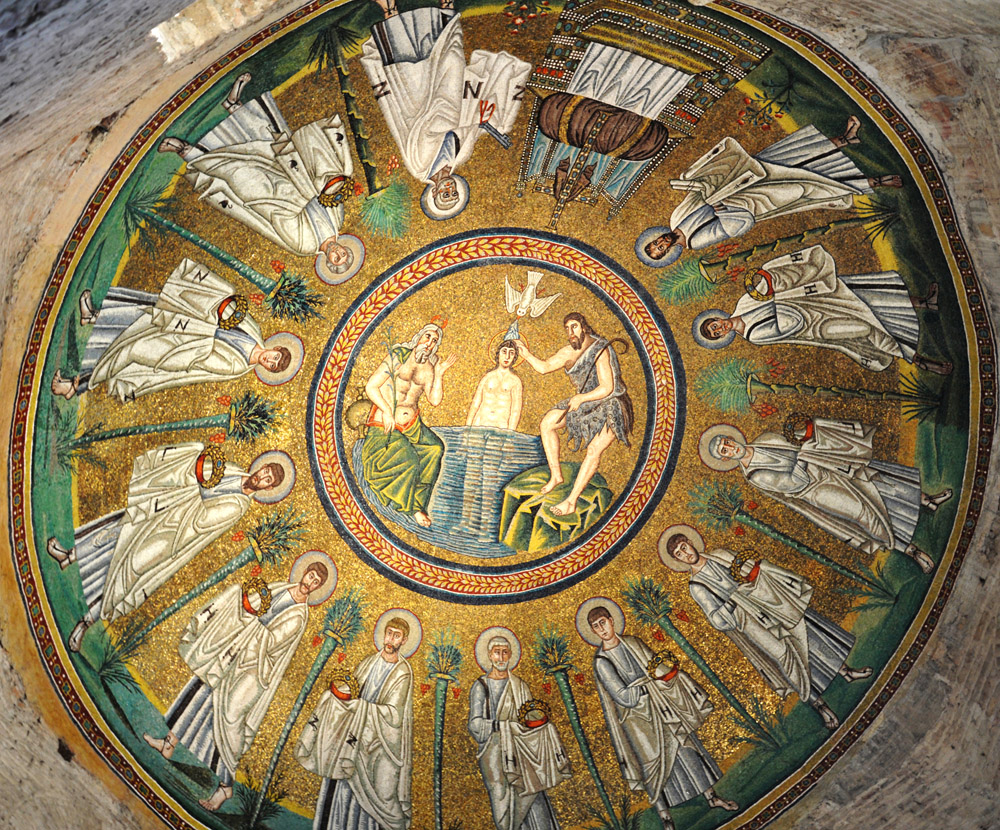The Baptism of Jesus

6th or late 5th century
Mosaic
Dome of the Arian Baptistery, Ravenna, Italy
The old man on the left signifies the River Jordan, raising his hand in acclamation. His attributes are traditionally a water jug, reeds, and crab claws on the head (Schiller, 133). Jesus stands in the river, naked even below the waist. Schiller (ibid.) writes that this is the first time he is pictured as a young man with a halo. John the Baptist stands on the shore to the right and places his hand on Jesus' head. He carries a shepherd's crook, as is not unusual in paleo-Christian images, and wears the animal skin mentioned in scripture.
The scene combines the moment of immersion, as John's right hand presses on Jesus' head, and the subsequent
descent of the Holy Spirit
in the form of a dove. The Father is represented by an elaborate throne to which the twelve Apostles are bringing their golden crowns, just as the elders bring theirs to the throne in Revelation 4:10-11. There is a straight line from the cross on that throne to the baptizing dove, perhaps suggesting the Arian doctrine that the Son is subsequent and subordinate to the Father. In the nearby
Neonian Baptistery,
built a few years later for an Orthodox congregation, there is no throne and it appears the Apostles are bringing their crowns to Jesus rather than to the Father. It may also be significant that the Neonian Jesus has a beard and a garment, which is held for him by the river personification. The Arian Jesus has neither.
View this image in full resolution.
View a detail of the throne, with commentary.
Read more about images of the Baptism of Christ.
Photographed at the Arian Baptistery by Richard Stracke, shared under Attribution-NonCommercial-ShareAlike license.